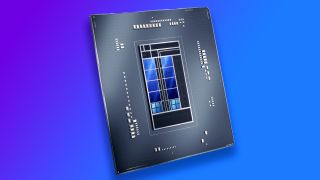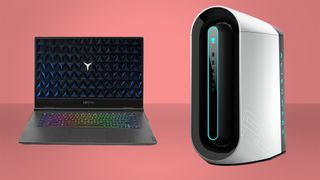Intel's next-gen Raptor Lake doubles cache sizes and matches AMD's Zen 4 thread count
SiSoftware's Core i9 13900 preview certainly makes Intel's next processor generation look promising.

A preview of Intel's next-gen CPU architecture, Raptor Lake, has popped up on the benchmarking site for SiSoftware Sandra (via Videocardz) and it promises some interesting things. First off, you have details about the Core i9 13900, plus there are some early benchmarks to pour over too.
The Core i9 13900 is a top-end chip boasting the same number of Performance cores as the current Core i9 12900 but with double the number of Efficient cores. That means you're looking at eight P-cores and 16 E-cores, for a total of 24 physical cores and 32-threads.
The Turbos of these cores appear to be lower than Alder Lake, at 3.7GHz for the P-cores and 2.76GHz for the E-cores, but it is early days for the chip and is likely an engineering sample. This is also offset somewhat by having twice as many E-cores and also by the doubling of the L2 cache.
The L3 cache is also 20% larger. Raptor Lake also appears to support faster DDR5; at 5,600MT/s as opposed to 4,800MT/s. AMD's Zen 4 is expected to support faster DDR5 right out of the gate, too, and it has already shown the impact of larger cache sizes with the Ryzen 7 5800X3D.
After highlighting the lack of AVX512 support in Raptor Lake—a feature that was initially turned off in Alder Lake and then fused off altogether in later chips—and the fact that it will be present in Zen 4, the site then goes on to present expected performance for Intel's 13th-Gen architecture.
Though it's worth noting that SiSoftware hasn't directly tested this chip itself: "At publication time," reads the report, "the products have not been directly tested by SiSoftware and thus the accuracy of the benchmark scores cannot be verified; however, they appear consistent and do not appear to be false/fake."
There are certainly some interesting results on show here, even if they are purely synthetic. For instance, the Dhrystone Integer test is 33% faster than Alder Lake, while the FP64 Double Precision Whetstone results are 100% faster. These are non-SIMD tests though (single instruction multiple data), which means that there are plenty of tests that won't see anything like that kind of uplift.
The biggest gaming news, reviews and hardware deals
Keep up to date with the most important stories and the best deals, as picked by the PC Gamer team.

Best gaming PC: The top pre-built machines from the pros
Best gaming laptop: Perfect notebooks for mobile gaming
In SIMD testing the results appear to be far more modest, between 4–8% and this is the kind of uplift we'd expect to see in the majority of real-world applications. You can expect this delta to widen too, as early engineering samples tend to run slower than the final silicon.
As there are more cores in Raptor Lake, we couldn't begin to guess at how fast the final CPU will run, but you'd expect it to be close to Alder Lake, even if it doesn't actually beat it. For reference, the Core i9 12900 has a max Turbo of 5.1GHz on the P-cores and 3.8GHz on the E-cores, suggesting there's plenty of room for faster clocks for Raptor Lake.
There's no firm date for when Intel will release its 13th-gen Raptor Lake CPUs, although it's generally believed that it will arrive in the autumn time frame, potentially as early as October.
Alan has been writing about PC tech since before 3D graphics cards existed, and still vividly recalls having to fight with MS-DOS just to get games to load. He fondly remembers the killer combo of a Matrox Millenium and 3dfx Voodoo, and seeing Lara Croft in 3D for the first time. He's very glad hardware has advanced as much as it has though, and is particularly happy when putting the latest M.2 NVMe SSDs, AMD processors, and laptops through their paces. He has a long-lasting Magic: The Gathering obsession but limits this to MTG Arena these days.
Most Popular




